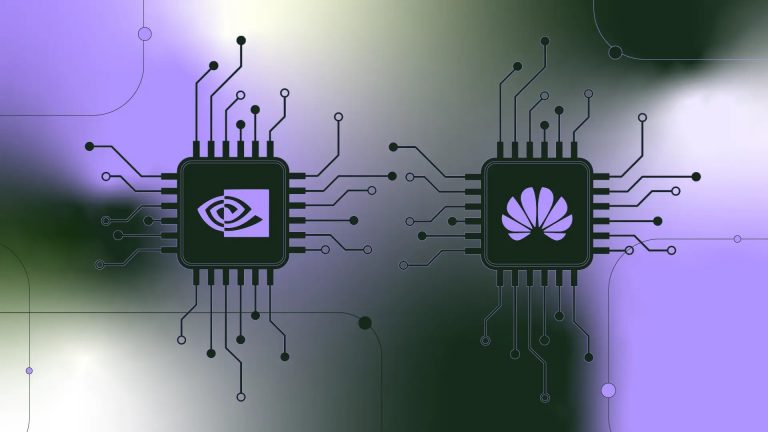
Chip giant Nvidia has formally acknowledged growing competition from Huawei, even as the Chinese telecommunications and technology company continues to operate under strict U.S. sanctions.
In its latest annual filing on Wednesday, Nvidia explicitly listed Huawei as a key competitor for the second consecutive year. This development marks a significant shift in the tech industry, as Huawei had not appeared in Nvidia’s competitor list for at least three years prior.
The move underscores Huawei’s rapid resurgence despite U.S. efforts to cripple its technological advancement.
Register for Tekedia Mini-MBA edition 19 (Feb 9 – May 2, 2026): big discounts for early bird.
Tekedia AI in Business Masterclass opens registrations.
Join Tekedia Capital Syndicate and co-invest in great global startups.
Register for Tekedia AI Lab: From Technical Design to Deployment (next edition begins Jan 24 2026).
Nvidia’s report highlights Huawei’s growing presence across critical sectors, including semiconductor chips, cloud services, computing processing, and networking products.
Speaking on the competitive landscape, Nvidia’s CEO Jensen Huang acknowledged the increasing challenge posed by Chinese firms, particularly Huawei. In an interview with CNBC’s Jon Fortt on Wednesday, Huang described Huawei as “vigorous and very, very competitive,” emphasizing that China’s domestic tech industry has remained resilient despite external pressures.
“There’s a fair amount of competition in China.
“Huawei, other companies, are … quite vigorous and very, very competitive,” Huang said.
U.S. Sanctions and Huawei’s Remarkable Defiance
Huawei’s continued growth is particularly striking given the heavy sanctions imposed by the United States since 2019. The U.S. government blacklisted Huawei over alleged national security concerns, accusing the company of having close ties to the Chinese government and military. These sanctions effectively cut Huawei off from critical American technology, including advanced semiconductor chips, software, and essential hardware components.
The restrictions severely disrupted Huawei’s operations, especially its lead role in the 5G rollout and once-dominant smartphone division, which relied heavily on U.S.-made processors and Google’s Android operating system. By 2021, Huawei’s revenue had plummeted by nearly 29%, and it was widely believed that the company’s days as a global tech powerhouse were numbered.
However, Huawei has stunned the world by finding ways to circumvent these restrictions and rebuild its technological capabilities. The company poured billions into domestic research and development, accelerating efforts to create homegrown alternatives to Western technology. Its most significant breakthrough came in semiconductor chip design, a sector long dominated by U.S. firms like Nvidia, Qualcomm, and Intel.
Despite being banned from acquiring advanced chips from American suppliers, Huawei, through its chip-design arm HiSilicon, managed to develop its own cutting-edge processors. The company’s Mate 60 Pro smartphone, released in 2023, featured a breakthrough semiconductor chip that enabled 5G-like speeds, shocking industry analysts who believed Huawei lacked the capacity to manufacture such advanced chips without U.S. technology.
Huawei’s comeback was not limited to hardware alone. The company recognized the need to develop its own software ecosystem after being banned from using Google’s Android operating system. In response, Huawei accelerated the development of HarmonyOS, a proprietary operating system initially designed for smart devices. By early 2025, Huawei unveiled HarmonyOS NEXT, its first fully self-developed operating system, marking a major milestone in China’s push for technological independence.
With HarmonyOS NEXT, Huawei effectively eliminated its reliance on U.S. software, a move that further strengthened its position in the global tech market. The operating system’s integration into the newly launched Mate 70 series signified a new era for Huawei’s smartphone division, proving that the company could not only survive but also compete head-on with industry giants like Apple and Samsung.
The fact that Nvidia, the world’s leading AI chip manufacturer, has formally recognized Huawei as a major competitor suggests that Huawei’s influence in semiconductors and AI computing is growing at an unprecedented pace.
While Nvidia still dominates the market for AI-focused chips, Huawei has aggressively expanded its own AI computing capabilities, investing heavily in data centers, AI-driven cloud services, and networking infrastructure. This expansion is particularly concerning for U.S. policymakers, as it signals that China is rapidly closing the gap in areas where the U.S. previously held an undisputed technological advantage.
Nvidia’s concerns also reflect the wider battle for technological supremacy between the U.S. and China. The Biden administration tightened export controls, restricting American companies from selling AI chips and advanced semiconductor manufacturing tools to China. However, Huawei’s ability to navigate these restrictions and continue its rise underlines that U.S. sanctions are losing their effectiveness.
The rivalry between Huawei and Nvidia is expected to escalate in the coming years, particularly in the fields of AI computing, cloud services, and semiconductor innovation.



